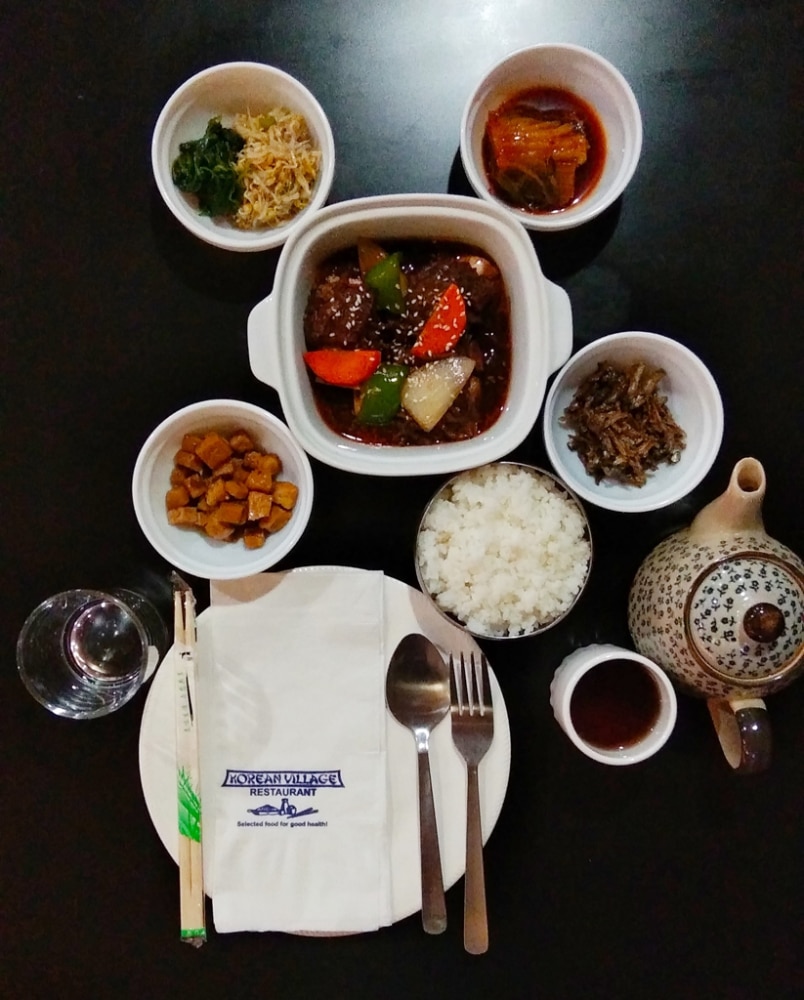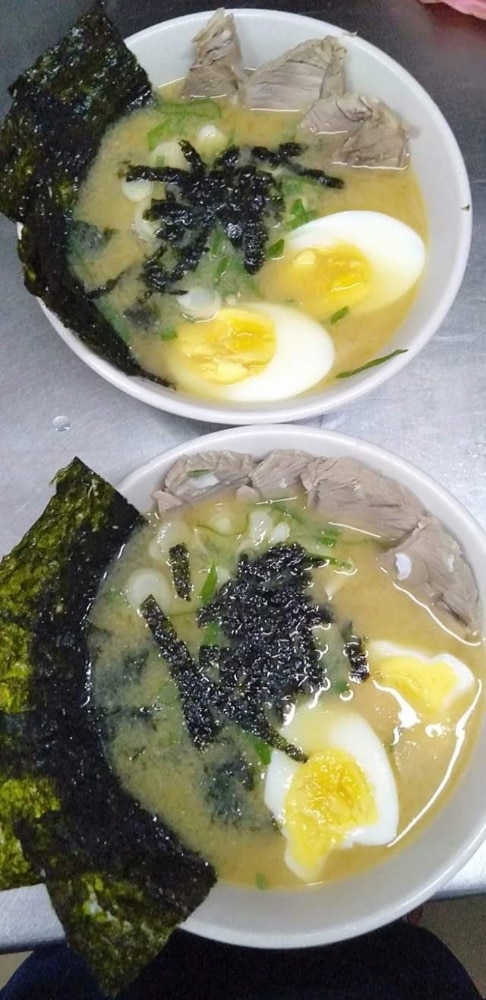Manila is richly dotted these days with Korean restaurants and samgyeopsal joints. Thanks to the influence of K-dramas, dining Korean has become a go-to for Filipinos, whether it’s to celebrate a special occasion or just to have a casual hangout with friends.
But possibly unknown to many, there’s already been a favored Korean dining spot in Manila from as early as the late 1970s—yes, even before “hallyu” or the Korean Wave became buzzwords in the Philippines. The restaurant is called Korean Village which opened in 1978, founded by a Korean lady and now run by her Filipino-Korean son. It was originally located in bustling Adriatico Street in Malate before moving to its current location in Julio Nakpil Street in 2007 where it was rechristened Nakpil Korean Village.
Not a few Manileños consider Korean Village their initiation to Korean food, which four decades ago was considered “fancy” hereabouts, or even “exotic” by some. When the restaurant reached a certain level of popularity, it became a venue for romantic dates and for celebrating milestones.
So with news that Manila’s OG Korean joint is already closing after over 40 years—their last day will be this Sunday, February 26, ANCX was told—we asked once and present Malate/Manila residents to take a quick nostalgic trip and share with us their Korean Village memories.
“It’s my introduction to Korean food in the 1980s,” says founder and lead guide of the tour outfit Old Manila Walks, Ivan Man Dy. “It was my father’s favorite [dining spot] and [so we] have eaten there countless times. My sister even celebrated her 16th birthday party there!”
Ivan is particularly attached to Korean Village’s “sweetish beef ribs, seaweed soup and beef teppanyaki.” As he got acquainted with the offerings of other Korean restaurants in later years, he realized why his father became a fan of the food at Korean Village. “Their offerings leaned towards the savory-sweet side, ika nga, panlasang Pilipino.”
Like Ivan, former advertising executive Joji Coloma also had her introduction to Korean cuisine at Korean Village. “I was a neophyte in the advertising industry back then. Every time I get my paycheck, I treated myself to something special,” she recalls. A trip to Korean Village was one of those treats, and she often indulged in the japchae, the futomaki, and sashimi. “I thought the small condiments on small platters were very special. I thought it was fancy back then.”
Dining at Korean Village used to be an event for Melchor Chua during his college years (1989 to 1992) at De La Salle University in Taft Avenue. The restaurant was top of mind for him and his barkada whenever someone is celebrating a birthday. “Since money was tight back then, we always had to order the beef stew—sauce pa lang ulam na! Then we order a few barbecues and lots and lots of rice,” he says.
Award-winning book designer and food writer Ige Ramos has vivid memories of the “exotic little restaurant.” He tells ANCX: “As far as I can remember, the ceiling was really low and the place was always crowded. The customers were mostly expats working from the nearby WHO [World Health Organization] and ADB [Asian Development Bank].”
Ige remembers the restaurant for its wide selection of banchan or side dishes. “We used to order bulgogi—braised bean sprouts seasoned with light vinegar, soy sauce, and roasted, ground sesame seeds plus strips of marinated beef cooked on the sunken stove situated at the middle of the table. The beef broth seasoned with chilies and sesame oil was always complimentary and the rice was always tasty and starchy at the same time.”
Ige would happily shell out P300 for a meal at Korean Village back in the day, and then it was off to the area’s famous bars “with our clothes smelling of smoked meat and various Korean dishes.”
Elbert Cuenca, the man behind Elbert’s Steak Room and Metronome, only vaguely remembers dining at Korean Village in its original Adriatico location. “I think I took my wife there when we were still dating, but neither of us can remember for sure.”
But Elbert and wife Liza, the lifestyle editor, were regular patrons at Nakpil Korean Village. “One of the reasons we liked going there was that it was usually empty, so we could go at any time, easily park and walk in, and be served immediately,” he says. The couple would ask for the same thing every time—"bulgogi with an order of lettuce and rice. It was the meat that would vary.”
While the service was pretty basic and the interiors spartan—“It didn’t have any of those fancy exhaust systems, just wooden chairs and tables with gas grills,” says Elbert—the food was always delicious (and abundant),” the restaurateur tells ANCX. “We never walked out disappointed.”
The former North Sy-quia Apartments resident Apa Ongpin considers Korean Village a pioneering Korean restaurant in Manila. “The food was hearty, and reasonably authentic,” he says, “although adapted somewhat to Filipino tastes, meaning not too spicy.” Back in the day, all-you-can-eat barbecue buffets weren’t exactly a thing yet, and Apa remembers the Korean Village menu offerings to be strictly a la carte. “It was a family restaurant, not too posh, and could handle big groups. It was always reasonably priced and the service was good, very much like Chinese restaurants.”
Korean Village holds a special place in the heart of Manila-born Jals Sy. “It brings back a lot of childhood memories,” she says. Since the Sys used to run a business in the Malate area, the Korean resto became one of the family’s default dining spots—for dinners or whenever they have to entertain visitors from overseas. “I remember the stainless bowl of sticky rice and numerous side dishes and the cook-it-yourself grill top. We would always smell of food after having our meal here! Good times!”
Delan Robillos, an ex gallery owner who now works for the NCCA, used to live in Malate as well, in Jorge Bocobo Street. Living just a short walk away from Korean Village, the restaurant also became a go-to for him and his family. His favorites counted “the Japchae, the O Deng, Ox Tongue, the complimentary pineapple after your meal, the salt-pepper-sesame seeds-oil-soy sauce combi for Samgyupsal in those tiny stainless dishes.” He also fondly remembers having met one of the restaurant’s oldest female servers who, like his wife, is an Ilongga.
As we write this, the restaurant, now on its last days, is expectedly packing it in, with most diners reliving memories of happy lunches and special dinners in this institution about to close its doors forever. “Yesterday, we tried to eat there one last time,” says Elbert. “We wanted to say thank you and wish the staff well, but they were slammed. Packed to the brim, we almost didn’t recognize the place. We didn’t want to impose on them any further, so we just ate elsewhere. We were just happy that people came out to show appreciation. The place deserved it.”
Photos from Nakpil Korean Village's Facebook page




